#workspace management software system
Explore tagged Tumblr posts
Text
Coworking Space Management Software | All you need to know
Effective Coworking Space Management hinges on using technology that promotes seamless interactions between managers and tenants. Coworking Space Management Software System simplifies tasks such as managing shared workspaces, meeting rooms, event areas, private offices, hot desks, dedicated desks, and creative spaces. Coworking Space Software allows tenants to book meeting rooms, manage their memberships, and access shared office resources. It also streamlines administrative processes, helping managers efficiently track and allocate resources like desks, printers, and conference rooms. With reliable Coworking Space Management Software, both tenants and managers can focus on productivity rather than operational complexities.
What is Coworking Space Management Software?
Coworking space management software is a digital solution designed to manage the daily operations of coworking spaces. It helps automate key functions such as member onboarding, billing, space booking, and resource allocation. The coworking spaces software allows space owners to monitor occupancy levels, track payments, and even analyze usage trends. Tenants can easily book rooms, access facilities, and manage their memberships. Coworking software enhances efficiency and improves the overall experience for both managers and users.

Types of Coworking Spaces?
Open coworking spaces: Shared office areas with desks and communal spaces.
Private offices: Dedicated office spaces for small teams or businesses.
Event spaces: Areas reserved for workshops, seminars, or networking events.
Hot desks: Flexible, non-dedicated seating options for freelancers and remote workers.
Benefits of Using Coworking Space Software
Automation of daily tasks: Simplifies operations by automating tasks such as invoicing, booking, and billing, reducing the need for manual processes and saving time.
Improved user experience: Tenants can easily book workspaces, manage memberships, and access facilities seamlessly, improving convenience and satisfaction.
Data analytics: Coworking software provides valuable insights into space utilization and member preferences by tracking occupancy rates and usage patterns, allowing for better decision-making.
Efficient communication: Enhances communication between management and tenants through automated notifications, messaging, and updates, creating a more connected community.
How Coworking Space Management Software Drives Business Efficiency?
Streamlines operations: Automates space reservations, payments, and resource allocation, leading to smoother daily workflows and reduced administrative burdens.
Boosts space utilization: Monitors real-time usage and optimizes space allocation, ensuring resources are maximized and underutilized areas are identified.
Enhances tenant satisfaction: Provides convenient, self-service booking and access options, improving tenant retention and overall satisfaction.
Reduces administrative workload: Automation frees up time for staff to focus on strategic planning and other value-adding tasks, enhancing operational efficiency.
Coworking Space Software: What Are the Costs Involved?
Pricing tiers: Most coworking space management software providers offer multiple plans with tiered pricing depending on the features and capabilities selected.
Subscription models: Typically, there are monthly or annual subscription options, providing flexibility based on the coworking space’s budget and needs.
Additional features: Costs can rise with advanced features like data analytics, CRM integration, or custom branding.
Scalability: The cost of the coworking spaces software often scales based on the size and complexity of coworking space, from small offices to large facilities.
RentAAA Coworking Space Management Software for Mobile and Desktop
To maximize the benefits of coworking spaces, implementing a cloud-based coworking space management software system is crucial. RentAAA coworking spaces software is an excellent solution that caters to both mobile and desktop users. It offers a comprehensive suite of tools designed to streamline every aspect of coworking space operations. From a seamless coworking space booking system and automated billing to resource allocation and occupancy tracking, RentAAA coworking space management software simplifies management tasks for owners and provides an intuitive platform for tenants.
RentAAA coworking software enhances communication between managers and tenants through real-time notifications and updates, fostering a connected community. What sets RentAAA apart is its commitment to accessibility—you can try out all its features with a free trial, no credit card required. This allows you to experience firsthand how RentAAA's all-in-one Working Space, Fleet, Property, and Accommodation rental management software can transform your coworking space into a more efficient and productive environment.
#workspace management software#coworking software#coworking space management software#coworking space software#space management software#coworking space management#workspace management app#coworking space booking system#coworking space booking software#coworking business software#workspace management software system#shared office space management software#desk booking software
0 notes
Text
6 ways to improve front desk operations in a hotel

Implement a User-Friendly Property Management System (PMS)
Investing in a robust, user-friendly PMS can streamline many front desk functions, allowing for quicker guest check-ins and check-outs, and simplifying task management for staff. The right PMS can also automate functions like billing, housekeeping updates, and guest profile management, ensuring that information is centralized and accessible. With integrated technology, front desk staff can access real-time data and focus more on engaging with guests rather than juggling paperwork.
Example: Hotels can use cloud-based PMS solutions that integrate with mobile devices, enabling staff to manage bookings, room assignments, and other guest requests on-the-go. This type of flexibility can enhance the guest experience and make the front desk operation more agile.
Enhance Staff Training and Development
A knowledgeable and friendly front desk team is essential for smooth operations and creating positive guest experiences. Training programs should include customer service techniques, conflict resolution, cultural sensitivity, and technology skills to ensure that staff can handle a wide range of scenarios. By investing in ongoing training and development, hotels can empower front desk agents to respond confidently and professionally to any guest need.
Example: Implementing customer service role-playing sessions or workshops on handling difficult situations helps front desk staff feel more prepared and confident in high-pressure situations. This leads to quicker resolution of guest issues and enhances the overall service quality.
Leverage Mobile Check-In and Check-Out Options
Offering mobile check-in and check-out options can greatly improve convenience for guests, especially those who value minimal contact or are on tight schedules. With these digital options, guests can skip the line, access their room with digital keys, and receive important information directly on their mobile devices. This not only speeds up the process but also reduces wait times at the front desk, allowing staff to focus on more personalized interactions with guests.
Example: Hotels that allow guests to check in through an app or kiosk help reduce lobby congestion during peak hours, providing a smoother arrival experience. Mobile check-out also enables guests to settle their bills quickly and leave feedback immediately, fostering a positive and seamless end to their stay.
Create a Well-Organized and Efficient Workspace
Organization is key to smooth front desk operations. A clutter-free, well-designed workspace helps front desk staff access essential tools and information quickly, allowing them to serve guests efficiently. Organized storage, a clear filing system, and ergonomic workstation setups can reduce unnecessary steps and help staff focus on guest engagement rather than searching for items.
Example: Organizing desk drawers with labeled sections for different forms, supplies, and guest essentials can speed up routine tasks. Hotels could also use digital filing systems to eliminate paperwork, making it easier to retrieve guest data and reducing physical clutter.
Use Data Analytics for Forecasting and Staff Allocation
Data analytics can play a significant role in optimizing front desk operations. By analyzing guest flow patterns, seasonal demand, and peak hours, hotels can better predict staffing needs and ensure that they have adequate coverage. This approach prevents both overstaffing and understaffing, ensuring that guests receive timely service without additional operational costs.
Example: With data insights, front desk managers can allocate more staff during weekends, holidays, or major events when guest traffic is higher. During low-occupancy periods, they can redistribute front desk staff to other areas of the hotel, optimizing labor costs and efficiency.
Encourage Personalized Service and Attention to Detail
Personalized service can leave a lasting impression on guests and set a hotel apart from its competitors. Simple gestures, like addressing guests by name, remembering their preferences, or accommodating special requests, can enhance guest satisfaction. Front desk teams can leverage guest data from CRM systems to tailor their service approach, creating an experience that feels unique and memorable.
Example: If a guest is a returning visitor who previously requested extra pillows or specific room amenities, front desk staff can proactively arrange these before their arrival. Such attention to detail shows the guest that their preferences are valued and remembered.
Conclusion An efficient front desk operation is essential for a hotel’s success and guest satisfaction. By adopting advanced technology, continuously training staff, organizing the workspace, using data analytics for decision-making, and personalizing guest interactions, hotels can significantly enhance their front desk operations. These improvements lead to smoother guest experiences, higher retention rates, and a stronger brand reputation.
Additional Tips for Optimizing Front Desk Operations
Offer Multi-language Support: Having multilingual staff or digital translation tools can enhance communication with international guests.
Automate Routine Tasks: Automated notifications for housekeeping, maintenance, or guest requests can streamline coordination among departments.
Implement Guest Feedback Systems: Encourage guests to provide feedback during check-out, which can help the hotel address issues immediately and improve service.
#hotel front desk operations#property management system for hotels#user-friendly PMS software#streamline hotel check-ins#mobile check-in and check-out for hotels#efficient front desk management#guest experience improvement#cloud-based hotel PMS#staff training for hotels#hotel technology integration#data analytics for hotels#personalized guest service#hotel front desk workspace organization#automated hotel billing systems#hotel guest satisfaction strategies#hotels near me with digital check-in#advanced hotel PMS in Chennaia
0 notes
Text
Workplace Management Software: Revolutionizing Office Operations

Introduction to Workplace Management Software
The modern workplace is no longer limited to fixed desks and rigid schedules. As hybrid and flexible work models gain traction, the need for efficient workplace management software has never been greater. But what exactly is it, and why is it a must-have?
What is Workplace Management Software?
Workplace management software is a digital solution designed to optimize and simplify various workplace operations. From scheduling spaces to managing resources and facilities, it’s a one-stop solution for efficient office management.
Why is Workplace Management Software Important?
Improving Efficiency in Modern Workplaces
Think of it as the conductor of your workplace orchestra, ensuring all operations are in sync and running smoothly.
Adapting to Hybrid and Remote Work Trends
With more organizations adopting hybrid models, workplace management software bridges the gap between remote and in-office employees.
Features of Workplace Management Software
Core Functionalities
Desk and Space Reservation Systems
Reserve desks, meeting rooms, or collaborative spaces with just a few clicks, eliminating the chaos of double bookings.
Resource Scheduling and Utilization
Optimize the use of resources like projectors, conference rooms, and shared devices to prevent underutilization.
Maintenance and Facility Management
Streamline maintenance requests, track issues, and ensure facilities are always in top shape.
Advanced Features
Integration with IoT and Smart Devices
Smart integrations allow automated lighting, temperature controls, and occupancy monitoring, enhancing the user experience.
Data Analytics and Reporting
Generate insightful reports on space usage, resource allocation, and employee preferences to make data-driven decisions.
Benefits of Workplace Management Software
Enhanced Employee Productivity
When employees can easily find and reserve the tools or spaces they need, productivity soars.
Cost Optimization
Reduce wasteful spending by tracking and optimizing resource utilization and space allocation.
Improved Workplace Experience
A well-organized, tech-driven workplace fosters employee satisfaction and retention.
Industries Leveraging Workplace Management Software
Corporate Offices
Streamline operations in large offices, especially those with multiple locations.
Co-working Spaces
Efficiently manage bookings, memberships, and shared resources in dynamic environments.
Educational Institutions
Optimize classroom, lab, and meeting room scheduling to support academic activities.
Healthcare Facilities
Coordinate resource management, maintenance, and staff schedules seamlessly.
Choosing the Right Workplace Management Software
Factors to Consider
Scalability
Ensure the software can grow with your organization’s needs.
User-Friendliness
An intuitive interface encourages adoption among employees and reduces training time.
Integration Capabilities
Look for software that works well with existing tools like HR platforms or communication apps.
Popular Workplace Management Software Providers
Leading names include Robin, Envoy, and Condeco, each offering tailored solutions for different industries.
Challenges in Implementing Workplace Management Software
User Adoption
Some employees may resist change, requiring training and ongoing support.
Integration with Legacy Systems
Combining new software with outdated systems can be challenging but is crucial for a seamless transition.
Data Security and Privacy Concerns
With sensitive workplace data at stake, robust security measures are non-negotiable.
The Future of Workplace Management Software
AI and Predictive Analytics
AI will enable predictive scheduling, automated resource allocation, and enhanced decision-making.
Focus on Sustainability and Green Workplaces
Future tools will prioritize energy efficiency and environmentally friendly practices.
Enhanced Remote Work Capabilities
As remote work continues to thrive, tools that cater to virtual collaboration will take center stage.
Conclusion
integrated workplace management systems is revolutionizing how offices operate, offering solutions that improve efficiency, enhance employee satisfaction, and reduce costs. As workplaces continue to evolve, investing in the right software will be key to staying ahead in a dynamic world.
#workplace management software#integrated workplace management systems#integrated workspace management
0 notes
Text
Harnessing Workspace Management Systems - The Productivity Paradigm
In the fast-paced world of modern business, where every second counts and efficiency reigns supreme, having a streamlined workspace management system is no longer an add-on but a necessity. Today, businesses across industries are recognizing the pivotal role that a robust workspace management system plays in driving productivity, enhancing collaboration, and optimizing resources.
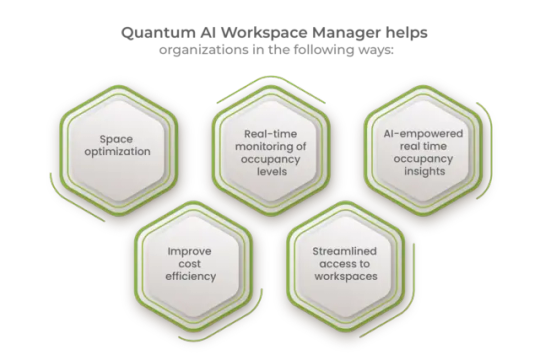
Having said that, not all organizations prioritize the need of a workspace management solution.
Here is shedding light on a few challenges faced by organizations that do not have a workspace management solution:
The importance of a Workspace Management Solution
A workspace management system empowers organizations to gain real-time insights into their spatial utilization, enabling them to make informed decisions about office layouts, desk allocations, and resource allocation. By optimizing space utilization, businesses can reduce overhead costs, maximize productivity, and create a more conducive work environment for their employees.
It provides employees with the flexibility to reserve desks, meeting rooms, and other resources seamlessly, regardless of their location. This not only fosters a sense of autonomy and empowerment among employees but also ensures that office spaces are utilized efficiently, even in a distributed work environment.
According to this report, the global workspace management software market size was $631.8M in 2022 and is expected to scale up to $1.8B in 2031, at a CAGR of 12.9% during the forecast period.
A few benefits of a workspace management solution include:
1. Better Collaboration
A well-designed workspace management system facilitates collaboration by providing employees with easy access to shared spaces, meeting rooms, and collaboration tools. Whether it's scheduling brainstorming sessions, hosting client meetings, or conducting team huddles, a centralized workspace management platform streamlines the process, allowing teams to focus on what matters most – driving results.
2. Adherence to Compliance and Regulatory Requirements
A workspace management system offers peace of mind by ensuring adherence to safety protocols, occupancy limits, and health guidelines. With features such as capacity management, contact tracing, and sanitation scheduling, businesses can mitigate risks, prioritize employee safety, and maintain regulatory compliance seamlessly.
3. Improved Operational Efficiency and Compliance
A workspace management system plays a pivotal role in enhancing the overall employee experience. By offering a user-friendly interface, intuitive booking process, and personalized preferences, businesses can empower employees to take control of their workspace environment, fostering a sense of ownership and satisfaction. Whether it's choosing their preferred desk location, booking amenities, or accessing relevant resources, employees feel more engaged and motivated when they have the tools to customize their work experience.
Quantum AI Workspace Manager is a Space Management Solution, meticulously crafted to elevate Space, Move and Reservation Management efficiency. Harnessing real-time insights, effortless resource allocation, and intuitive interfaces, our platform empowers organizations to nurture dynamic and collaborative work environments. Whether optimizing space utilization or orchestrating seamless moves and reservations, our holistic suite of tools ignites efficiency and sparks innovation. With seamless mobile access and scalable functionality, our solution evolves alongside the demands of modern workplaces, guaranteeing a frictionless user experience. Embrace the forefront of workspace management with our pioneering solution today.

Quantum AI Workspace Manager helps organizations in the following ways
The importance of a workspace management system cannot be overstated in today's dynamic business landscape. From optimizing resource utilization and fostering collaboration to ensuring compliance and enhancing employee experience, a robust workspace management system serves as the cornerstone of a modern workplace strategy. As businesses continue to evolve and adapt to changing work paradigms, investing in a comprehensive workspace management solution is not just a competitive advantage – it's a strategic imperative for long-term success.
If you are looking for a workspace management solution to streamline operations, optimize space usage, and improve workplace flexibility, feel free to contact us or write to us at [email protected] for assistance and more information.
0 notes
Text
Welcome to my reality. No, not the one where I tower in horror over Middle-earth with the last armies of orcs and a darkness that envelops all life. Today's reality is far more... modern. If someone had told me thousands of years ago that I would one day be in an ordinary apartment with a cup of coffee in hand, surrounded by the blue-white glow of monitors, I would have laughed. But now? Now this is my life.
Morning, as it is: a debrief with coffee Oh, that sweet awakening. The alarm clock rings. My eternal wrath could destroy it, but why? It's all part of the modern routine. I, Sauron, the great lord of evil, now wake up not to an army but to the sound of a smartphone alarm, so I can sit at the kitchen table and pour myself a coffee—strong, black, like my view of the world.
Ah, coffee. Perhaps in the modern era, it's the bitterness that I find appealing. Every morning, it's a ritual: I sit in front of the computer, scrolling through social media and the news. The design here is actually quite inspiring: black screens, white letters. It all feels so office-cold that I involuntarily smile. "News from Mordor" could be a popular blog.
Remote work, same old job: Zoom meetings and evil schemes How times have changed, haven't they? In my past, I led armies in person, standing at the front lines. And now... now I spend most of my day in Zoom meetings. Yes, even the Dark Lord has to deal with modern bureaucracy. Orcs need management, tasks need assigning, KPIs are sacred. Technology has made my dark work more sustainable.
— "Urgash, what’s going on with the weapon shipment? Why don’t we have the third-quarter report on the allocation of eastern lands?" I ask with cold resolve, looking into the camera, only to hear confused muttering in response.
Orcs, of course, can’t handle Google Sheets. But what can you do? Routine.
Office equipment and old habits My workspace is a modern masterpiece. Cold-lit lamps, an ultramodern laptop with a keyboard glowing with a faint, almost infernal light. All this allows me to devise new plans to conquer Middle-earth with high efficiency. Software? Oh, trust me, even a palantír would envy the power of my server.
But some habits remain unchanged. A glance at a smoldering notepad reminds me of runes and ancient spells. I wonder if I could code the way I once cast curses—would I be able to create a virus to take over the entire internet? Then again... no, we’ve seen where that leads. And if the system crashes, I’m not ready to lose my bookmarks.
Lunch breaks: yes, even dark lords need to eat Ah, lunch breaks. They’ve become part of modern Sauron’s life. Don’t think I’ve lost my taste for brutal bloodshed. No, that’s in the past. Now my lunch consists of something more grounded. A cold salad, maybe a couple of sandwiches, and, of course, another cup of coffee. Only the grim taste of dark bread reminds me of the old days.
— “Delivery for Mr. Sauron?” — a knock at the door. Naturally, food delivery. Even cuisine today has become a sort of twisted pleasure. Strange. The once elegant culinary masterpiece—roasted flesh—is now replaced by avocado toast. Though, to be honest, they’re quite good.
Fitness by the call of darkness Of course, physical fitness is as important for a Dark Lord as for any modern mortal. A treadmill awaits me in the bathroom. No, I don’t go outside. Mordor is still a long way from glamorous park trails. Still, if I must exist in this new, modern world, I can at least maintain my strength. Cardio is power, they say. Power? Ha! Let them know power when I’m in full battle form.
After the run—a few minutes on the punching bag. No, I haven’t lost my skills! Even in a world where leaders rule through screens, old methods still work. Deep down, I’m still ready to crush anyone who dares stand in my way.
Evening leisure: shows and dark conspiracies What else to do in the evening, when the office lights dim? Of course, watch shows. Oh, how elegantly modern shows portray power dynamics. My streaming subscriptions are quite diverse: from Game of Thrones to dark detective stories. In these tales, I see myself—though in a much less epic form, it’s still satisfying to watch others make mistakes.
— "Seriously? Did you really think that conspiracy would work?" — I whisper as I watch yet another villain's plan fall apart. Perhaps, if they’d hired me as a consultant...
Reflections before sleep: what went wrong? When night falls and my monitors dim, I sit on the windowsill and look at the sky. No stars, of course—the city lights drown them out. Even in such a world, illusions of power and light don’t add true strength. I ponder how the world might have changed if my plans had worked out sooner. But then I realize that even in this new world, I can still become its lord.
Only now, my army will consist not of orcs but of fans, liking my posts and retweeting each of my new brilliant plans.
End of the day: Darkness will always find a way So, there you have it, a day in the life of Sauron in the modern world. Not so terrifying, you’d say? Oh, but what do you know? Even in this modern world, Darkness will always find its way. And while you think I’ve become but a shadow of the past, remember: I’m always watching you. Through your screens, through your reflection in darkened windows.
And who knows, maybe tomorrow, your alarm will ring just a bit too loudly...
#lord of the rings#the silmarillion#tolkien#fanfic#silm fic#silmarillion#lort of the rings#lort#sauron#the silmarilion#the silm fandom#style
17 notes
·
View notes
Text





















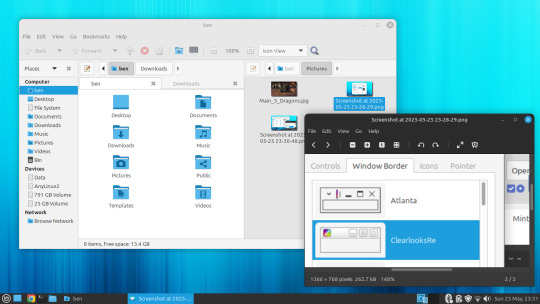





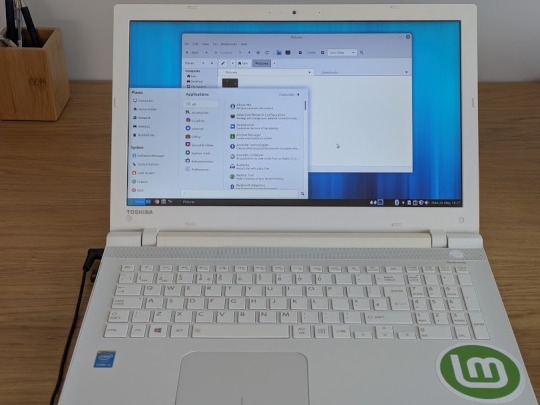
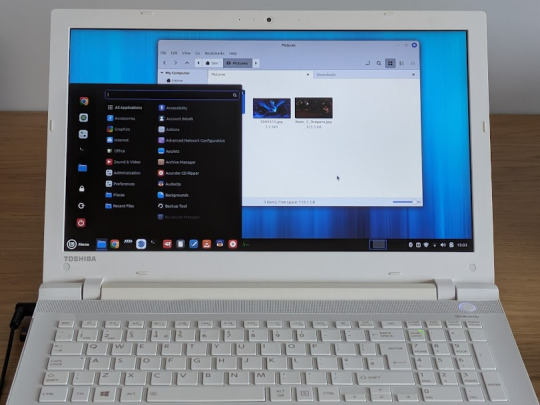

25.05.25
I installed Linux Mint MATE 22.1 today.
https://linuxmint.com/screenshots.php#
I had been testing it out on the Linux laptop and decided to install it in place of Debian 12. I kept my Mint Cinnamon install.
Once it had installed, which was very quick, I updated Mint using the updater tool and then installed Google Chrome, VLC Media Player, GIMP and a couple of other apps to the laptop.
Many of these programs I use on the Cinnamon install as well.
I then tweaked the panel by adding a workspace switcher and a set of eyes that follow the cursor!
A did a quick Neofetch in the command window, this shows detailed system information.
Like LM Cinnamon it is very well supported out the box and features modern Bluetooth set-up support, a clean user interface and an easy to set up experience.
The themes are all Linux Mint related window styles which look very modern. The MATE themes I had in Debian can be manually installed in Linux Mint if needed. They can be downloaded from the Software Manager or through the terminal.
This theme pack provides the same experience across the desktop whether you are using MATE or Cinnamon.
However I did come across a small bug where the widgets locked onto the panel moved after a restart. This is possibly a GTK related bug on Ubuntu versions with this desktop environment. It is easy to fix though by resetting the panel.
The bug only exists on newer MATE versions.
Linux Mint uses MATE desktop 1.26. However Debian also uses 1.26 which didn't have this bug. I don't know what's causing this in Mint. Hopefully this gets fixed in the next few releases!
The latest desktop version for MATE is 1.28, released later last year. Distros such as Ubuntu and Fedora would use this as it is a more recent release.
Also the MATE desktop is less animated compared with Cinnamon, however the desktop allows you to focus on tasks without distractions and feels very stable to use.
Underneath are some comparisons with the Cinnamon desktop.
I prefer Linux Mint with the Cinnamon desktop as it looks and feels more modern and is it's flagship desktop distribution. It is also more powerful as users can add applets, themes and layout configurations through an in-system database which is regularly updated.
The file manager in MATE is called Caja and is based on GNOME 2's Nautilus, whilst on Cinnamon the file manager is called Nemo, which uses the newer GNOME file manager as a base.
A simple, but powerful desktop environment for Mint!
3 notes
·
View notes
Text
Maya vs Blender: What to Choose for Your Animation Journey
Embarking on a journey into the world of 3D animation is an exciting, yet daunting task. With a variety of animation tools available, one of the biggest decisions aspiring animators and seasoned professionals face is choosing the right software. Two of the most popular choices in the industry are Maya and Blender. Both are powerful tools, each offering a unique set of features tailored to different needs and skill levels. In this article, we will dive into the key differences between Maya and Blender to help you make an informed decision for your next animation project.
User Interface and Experience
When it comes to animation software, first impressions matter. The user interface plays a crucial role in how efficiently you can work, especially with complex tasks.
Maya: Known for its sleek and professional interface, Maya is designed with industry professionals in mind. It offers a customizable layout that allows you to adjust the workspace to your specific workflow, enhancing your productivity and overall experience. However, this can sometimes make it feel a bit overwhelming for beginners.
Blender: On the other hand, Blender offers a user-friendly interface that caters to both beginners and seasoned professionals. Its intuitive navigation tools make it easy to jump into the software, and it can be easily tailored to suit individual needs. Blender's all-in-one interface simplifies the learning curve, especially for those just starting in the world of 3D animation.
Comparing Workflow and Processes
The way each software handles workflow and processes differs significantly.
Maya: Following a more traditional pipeline, Maya separates tasks into distinct modules for modeling, animation, and rendering. This structured workflow provides clarity and helps facilitate collaboration and project management, making it ideal for larger, team-based projects.
Blender: Blender takes a more integrated approach, combining all aspects of the animation process into a single interface. While this can be a huge advantage for individual users who prefer a streamlined process, it may feel a bit cluttered or overwhelming for some, especially those working on large teams.
Modeling Capabilities
Both Maya and Blender provide powerful tools for creating intricate 3D models, but there are some key differences to note.
Maya: Maya is renowned for its advanced modeling toolkit, which includes features like NURBS modeling, sculpting tools, and advanced polygon modeling techniques. These tools allow for precise control and are highly favored in professional environments where intricate models are required.
Blender: Blender also offers a comprehensive set of modeling tools, including sculpting, retopology, and procedural modeling options. While its modeling capabilities are incredibly powerful, some users may find that Maya’s advanced tools are more suited for highly detailed, professional-grade work.
Materials and Texturing
Texturing and materials are essential to creating a polished 3D model, and both Maya and Blender excel in this area.
Maya: Maya’s node-based material editor provides precise control over material properties, making it ideal for more complex shading workflows. This level of control is particularly valuable for users who need advanced customization in their textures.
Blender: Blender’s integrated material system offers a more user-friendly approach to texturing, with a library of pre-made materials and procedural textures that can speed up the workflow. While it’s more beginner-friendly, it still provides enough flexibility for advanced users.

Animation and Rigging
The animation and rigging process is crucial for bringing your 3D models to life. Here’s how Maya and Blender compare:
Maya: Maya is widely regarded as the industry standard for animation and rigging. Its robust animation tools include keyframe animation, procedural animation, and advanced character rigging capabilities. Maya also offers powerful tools for facial animation, muscle systems, and dynamic simulations.
Blender: Blender offers similar animation features, including a powerful armature system, inverse kinematics, and a variety of animation modifiers. Although its animation tools may not be as specialized as Maya’s, they are more than sufficient for most professional work and are perfect for indie developers and hobbyists.

Rendering
Rendering is the final step in the animation process, and both Maya and Blender deliver stunning results.
Maya: Maya uses Arnold as its default rendering engine. Known for its photorealistic quality and speed, Arnold is a favorite among professionals in the film and animation industries.
Blender: Blender’s Cycles renderer offers similar capabilities, supporting ray tracing, global illumination, and GPU acceleration. Cycles provides excellent rendering quality and is known for producing beautiful results in both still images and animations.
Conclusion: Maya vs Blender – Which One to Choose?
In the age-old debate of Maya vs Blender, there is no one-size-fits-all answer. Both software options offer unique features and capabilities that cater to different needs and preferences. Here's a quick summary to help you decide:
Maya: Best suited for professionals working in large teams or in industries where the highest level of detail, precision, and control is required (e.g., feature films, AAA games).
Blender: A great choice for independent artists, hobbyists, and small studios who want an all-in-one, beginner-friendly tool that doesn’t come with hefty licensing fees. It’s also an excellent option for those who prefer open-source software.
Ultimately, the choice between Maya and Blender comes down to your personal needs, project size, and workflow preferences. Both programs offer powerful features that can help bring your animations to life, so don’t hesitate to experiment and explore both to see which one best fits your style.
Ready to dive deeper into the world of animation? Check out our selection of 3D animation courses and start your animation adventure today—whether you're a Maya enthusiast or a Blender aficionado, there’s something for everyone!
2 notes
·
View notes
Text
Devblog 1
Hi! My name is Wendy, I'm a software developer, and the creator of Dear Darling Games. I'm going to be using Tumblr as a more relaxed and unpolished blog. For now, because I don't know how to format a blog post professionally quite yet. Later, I'll want a break from the structure of it, and have many things I feel I can chat about.
About me! I'm currently twenty two years old, and my goal is to be a solo game developer with a heavy focus on visual novel RPGs. I have no experience, and I'll be logging and citing my entire process as I learn to the best of my ability. Even figuring out the right questions to ask has been quite the task.
Tonight, I'm starting at square one. I'm using an IdeaPad laptop, and operate on a night-shift schedule due to work and life circumstances. This means most updates will be around four in the morning for me. I'm head of household in many ways, so sometimes I will have to step away for a day or two to get my affairs in order.
Here's all I'm learning, planning to learn as of now, and what I have so far.
Planning to learn: HTML, CSS, JavaScript, Godot Engine, Procreate, and Blender. 2D paper-doll animation, rigging, video editing, layering, how to use Alpha lock... Sound design - cello, violin, piano, flute, foley techniques, and general sound equipment. Navigate and create - a website, a put together GitHub profile, and my first game pair; a 2D Mouse themed VN RPG, and a 2D farming game inspired by Zombie Farm with significant changes to the storyline, main mechanics, and characters. In essence, a reworked fan remake, and it will be free to play. I will also be learning how to navigate matters of intellectual property, copyrighting, and more in that area. Finally, I'll be learning Bootstrap, Sass, and React and Redux to create Single Page Applications.
Learning now?: HTML, CSS, Godot Engine, Procreate. Foley techniques, and I've officially gotten down plucking scales on my cello. No luck with the bow yet... I'm refreshing my guitar skills, and saving for a keyboard. I'm utilizing RPG Maker to start familiarizing myself with very, very basic aspects of how to communicate with the computer. Plus, it gives fast results which help lulls in attention span for learning how to do it all myself. I am not planning on publishing a game with RPG maker for *professional* purposes to illustrate learning or ability, but it is very fun to use.
What I've got: Full storyline and pathway branching for decisions, voice bits and character voices [done by me], snacks, water, and a dedicated workspace. Character sketches on paper, most of the dialogue, a working title for both, and most of the battle and other systems planned. It feels like all that's left to do is code and Learn How to Draw Digitally, but that's sure a lot when you have to break it down into all the little steps and refocus those into groups and whatnot. I also have a GitHub profile and joined their Developer Program, I have this tumblr, a Jira account to break down tasks and to-dos in a more manageable way, and my Neocities website has officially been set up to the point of Having It.
I'll release a pinned post with my production announcements later.
fin: 4:04AM
2 notes
·
View notes
Text
How to install and use IrfanView in Linux - Tutorial
How to install and use IrfanView in Linux - Tutorial
Updated: May 30, 2022
My Windows to Linux migration saga continues. We're still a long way off from finishing it, but it has begun, and I've also outlined a basic list of different programs I will need to try and test in Linux, to make sure when the final switch cometh that I have the required functionality. You can find a fresh bouquet of detailed tutorials on how to get SketchUp, Kerkythea, KompoZer, as well as Notepad++ running in Linux, all of them using WINE and successfully too, in my Linux category.
Today, my focus will be on IrfanView, a small, elegant image viewer for Windows, which I've been using with delight for decades now. It's got everything one needs, and often more than the competitors, hence this bold foray of using it in Linux despite the fact there are tons of native programs available. But let's proceed slowly and not get too far ahead of ourselves. After me.
As I said, it's majestic. A tiny program that does everything. It's fast and extremely efficient. When I posted my software checklist article, a lot of Linux folks said, well, you should try XnView instead. And I did, honest, several times, including just recently, which we will talk about in a separate article, but the endeavor reminded me of why I'd chosen IrfanView all those years back. And those reasons remain.
Then, I did play with pretty much every Linux image viewer out there. None is as good as IrfanView. It comes down to small but important things. For instance, in IrfanView, S will save a file, O will trigger the open dialog. Esc quits the program. Very fast. Most other programs use Ctrl + or Shift + modifiers, and that simply means more actions. I did once try to make GwenView use the full range of Irfan's shortcuts, but then I hit a problem of an ambiguous shortcut, wut. I really don't like the fact that hitting Esc takes you to a thumbnail overview mode. But that's what most programs do.
WINE configuration
The first step is to have WINE installed on your system. I am going to use the exact same method outlined in the SketchUp Make 2017 tutorial. I have the WINE repositories added, and I installed the 6.X branch on my system (at the time of writing).
IrfanView installation
Download the desired 32/64-bit version of the program and then install it. The process should be fast and straightforward. You will be asked to make file type association. You can do this, or simply skip the step, because it doesn't make any difference. You need to associate IrfanView as the default image viewer, if this is your choice, through your distros' file type management utility, whatever it may be.
And the program now works! In Plasma, on top of that, you can also easily pin the icon to the task manager.
Plugins and existing configuration(s)
Much like with Notepad++, you can import your existing workspace from a Windows machine. You can copy plugins into the plugins folder, and the IrfanView INI files into the AppData/Roaming folder. If you don't have any plugins, but you'd like to use some, then you will need to download the IrfanView plugins bundle, extract it, and then selectively, manually copy the plugins into the WINE installation folder. For instance, for the 64-bit version of the program, this is the path:
~/.wine/drive_c/Program Files/IrfanView/Plugins
As a crude example, you may want to make IrfanView be able to open WebP files. In that case, you will need to copy the WebP.dll file into the folder above, and relaunch the program. Or you can copy the entire set of IrfanView plugins. Your choice, of course.
Conclusion
And thus, IrfanView is now part of our growing awesome collection of dependable tools that will make the Windows to Linux migration easier. I am quite sure the Linux purists will be angry by this article, as well as the other tutorials. But the real solution is to develop programs with equivalent if not superior functionality, and then, there will be no reason for any WINE hacks.
If you're an IrfanView user, and you're pondering a move to Linux, then you should be happy with this guide. It shows how to get the program running, and even import old settings and plugins. I've been using IrfanView in Linux for many years, and there have been no problems. That doesn't say anything about the future, of course, but then, if you look at what Windows was 10 years ago, and what it is now, it doesn't really matter. Well, that's the end of our mini-project for today. See you around. More tutorials on the way!
Cheers.
3 notes
·
View notes
Text
The true desktop metaphor is macOS

Since its initial classic version, macOS (originally called Macintosh System Software) has adopted a graphical approach that prioritizes consistency and user integration with the digital environment. The concept of operating with a single visible application, characterized by a fixed menu at the top of the screen, distinguishes macOS from many other operating systems that were inspired by it. This menu remains stable regardless of the number of open windows, establishing an intuitive relationship between the user and the system. This design harkens back to systems with interfaces exclusively based on text, where only one application was executed at a time, maintaining control at a fixed point and reducing confusion, thereby promoting an organized workflow.
With the introduction of multitasking, Apple decided to preserve the paradigm of one application at a time on the screen, later allowing the viewing of background application windows while working in the focused application. To this day, it is possible to completely hide background application windows in macOS; to do so, simply press the Command key along with the H key (Command + H), making only the active application's windows visible.
To differentiate its system from macOS, Microsoft chose to display each application in a window instead of occupying the entire screen like macOS, which gave rise to the system's name: Windows. However, this choice created a challenge: if applications are in windows, where could users manipulate documents? To address this issue, Microsoft adopted the concept of Multiple Document Interface (MDI). This approach significantly deviated from the cohesive logic of macOS and broke the paradigm of the workspace.

MDI example
In an MDI environment, multiple document windows could be contained within a single "parent window." Although this structure provided a solution for document management, it also introduced unnecessary complexity, making it difficult to manage each document individually. For users, the presence of multiple "child" windows under a main window created a confusing and fragmented semantic experience, distancing them from the direct and intuitive organization of the interface and compromising the use of the workspace as a support for activities.
The gradual abandonment of MDI by Microsoft helped resolve some of this confusion but brought forth a new problem: high memory consumption. In Windows, each open document began to require its own instance of the application, significantly increasing resource usage. In contrast, macOS maintained a single-instance approach: one application could manage multiple documents without creating new instances for each one. This optimizes memory usage and contributes to more efficient performance. In macOS, there are no copies of the same application running; there is only one instance, resulting in greater efficiency for the system and clearer user experience.

Mac OS Classic
Another essential aspect that differentiates macOS's philosophy is the "desktop" paradigm. Since its early versions, the desktop in macOS has functioned as a natural extension of physical workspace. Users could drag and drop texts, images, files, and other objects directly onto the desktop for temporary storage and later use. This model directly reflects a physical desk where items being worked on can be left while another task is performed, allowing for easy retrieval later.
For this reason, it has never been truly possible in macOS to make a window occupy the entire screen; doing so would compromise the idea that the desktop is more than just a background. It allows users to interact both within the application window and with objects arranged on their workspace. Thus, the Zoom behavior—clicking on the Zoom Box in classic macOS or double-clicking at the top of a window—does not maximize the window on-screen; instead, it seeks to adjust it to optimize content presentation while allowing manipulation of objects on the desk.
This philosophy continues today in macOS Sequoia; even with the adoption of “Snap,” which automatically organizes windows on-screen, they do not touch each other or the screen edges—reinforcing thus the paradigm of windows on a workspace while preserving original language intact and coherent. The red button on windows aims to emulate iPadOS and iOS functionality, facilitating adoption by users already familiar with these systems.
To accommodate iPadOS and iOS paradigms—which lack a workspace—macOS employs the concept of Spaces introduced alongside Mission Control. This concept allows for multiple applications and distinct workspaces within their own spaces. The first workspace always contains a desktop area, thus prioritizing classic window and workspace paradigms.
In Windows, users tend to maximize application windows, rendering workspace use ineffective. When an application is maximized in Windows, it emulates total focus on that application—similar to what occurs in macOS—but renders workspace use impossible. Over time, Windows completely abandoned this area; it became primarily a location for program shortcuts.
The ability to drag and drop objects in macOS reinforced a strong focus on "drag-and-drop" interaction, creating a more immersive experience for users. This behavior was inspired by earlier systems like Xerox Alto and Xerox Star that explored graphical interface concepts with direct object manipulation. macOS enhanced this idea by offering an interface where digital components could be dragged and intuitively manipulated like physical objects.

NeXTSTEP
This paradigm transformed user experience into something more cohesive; the desktop was not just a place for application shortcuts but an extension of ongoing work. The influence of NeXTSTEP—the operating system developed by Steve Jobs after leaving Apple—reinforced this design philosophy. With concepts like object-oriented development introduced by NeXTSTEP, significant advances were made in macOS's structure and usability.
The Dock, for example—one of macOS's most iconic elements—originated from NeXTSTEP and provides quick access to applications and documents in a single accessible visual line. Additionally, NeXTSTEP introduced advanced frameworks that enabled more modular and interactive applications. These technical details reflect coherence and elegance in macOS's interface.
The system is designed not only to execute specific functions but also to provide intuitive integration between user and machine, promoting a work semantics more aligned with what is natural in graphical environments. While Windows and other operating systems have attempted to emulate parts of this unique macOS experience, many concepts remain unmatched within this system.
Over decades, this approach to graphical interface has solidified as a reference for coherence and functionality; drawing inspiration from past systems (like Xerox Star and NeXTSTEP) while remaining true to its clear user experience vision. This established continuity and simplicity in interactions that contribute even today to perceiving macOS as more than just an operating system: it is seen as a natural extension designed to work harmoniously with its user beyond superficial appearances.
#desktop#metaphor#operating system#desktop metaphor#macos#mac#mac os x#macbook#window#apple#microsoft
4 notes
·
View notes
Text
Reasons Why Your Coworking Space Need a Digital Upgrade?
In today's dynamic work landscape, coworking spaces have emerged as popular hubs for professionals seeking flexibility, collaboration, and community. Coworking Spaces offers a diverse range of amenities, including shared workspaces, meeting rooms, event areas, private offices, hot desks, dedicated desks, and creative spaces. However, to streamline operations, elevate member experience, and optimize resource utilization, managing workspaces requires a digital user-friendly coworking space management software platform.
7 Advantages of Coworking Space Software
Onboard and Manage Tenants: Coworking space software simplifies tenant onboarding by using invitation links and QR codes generated through the app. This feature accelerates the registration process, ensuring new members can quickly access services and feel welcome from the very start.
Comprehensive Booking System: The coworking space booking management system streamlines reservations for shared areas, making it easy for tenants to view availability and secure spaces. By reducing scheduling conflicts and improving booking transparency, this system boosts member satisfaction and smooths daily operations.

Common Area Management: Managing shared spaces like meeting rooms and collaborative areas becomes seamless with real-time availability tracking. The coworking space management software enables quick scheduling, helping tenants book facilities when needed, ensuring optimal usage, and maintaining a smooth flow within the coworking environment.
Transparent Invoicing: Coworking space software provides clear, detailed invoicing, eliminating confusing billing processes. With easy-to-navigate billing and payment tracking features, managers can handle finances more efficiently, and tenants benefit from a straightforward, transparent payment experience.
Ongoing Support: Workspace management software emphasizes continuous support, enabling easy communication between property owners and tenants through mobile and desktop access. Swift responses to inquiries enhance service quality and build trust within the coworking community, ensuring tenant satisfaction.
Access Real-Time Data & Analytics: Workspace management software offers valuable insights by tracking occupancy rates, tenant activity, and financial performance. This data-driven approach helps optimize coworking space efficiency, empowering owners to make informed decisions that improve overall operations.
Boost Efficiency: Routine tasks are automated, freeing up time and streamlining daily operations. This enhanced efficiency allows managers to focus on growth strategies and member services, creating a well-managed and thriving coworking environment that stands out in the market.
Best Coworking Space Management Software in Australia
Upgrading to digital solutions empowers coworking spaces to build a vibrant, community-focused environment, attract new members, and adapt quickly to an ever-changing work landscape. A comprehensive workspace management software can streamline booking processes, automate billing, and optimize resource allocation hassle-free. To drive growth and set your coworking space up for long-term success try RentAAA Coworking Space Software. It allows you to manage and monitor the working space from mobile and desktop applications. Explore all coworking space management features with its free demo by visiting RentAAA rental software in Australia. Easy Signup, No credit card is required.
#workspace management software#workspace management software Australia#coworking space software#coworking space software Australia#coworking software#coworking software Australia#coworking space management software#coworking space management software Australia#coworking management software#coworking management software Australia#coworking space booking system#coworking space management app#workspace booking system#workspace booking software#best coworking space management software#best coworking space software#space management software
0 notes
Text
Mastering Java: Your Comprehensive Guide to Programming Excellence
Embarking on the journey of mastering Java is akin to entering a realm of endless possibilities. Java, a versatile and widely-utilized programming language, offers a broad spectrum of applications, from crafting web and mobile applications to powering robust enterprise systems. Whether you are a novice in the realm of coding or a seasoned programmer looking to broaden your skill set, the path to proficiency in Java is an exciting one.

In this comprehensive guide, we will be your guiding light through the intricacies of Java, starting from the foundational basics and progressing to the more advanced aspects of the language. Our objective is to equip you with the knowledge and skills that form a robust and unshakable foundation for your journey into the vibrant world of Java. Fasten your seatbelt as we embark on this exhilarating exploration, charting a course that will empower you to thrive in the ever-evolving landscape of software development.
Here's a 8-step guide to effectively learn Java
Step 1: Setting Up Your Development Environment
Your journey to becoming a proficient Java developer commences with setting up your development environment. The essential components are the Java Development Kit (JDK) and an Integrated Development Environment (IDE) like Eclipse or IntelliJ IDEA. These tools aren't just convenient; they're the gears that will drive your Java programming endeavors. They streamline the coding process, provide useful features, and offer an organized workspace, making your coding experience efficient and enjoyable.
Step 2: The Foundation - Learning the Basics
With your development environment ready, it's time to delve into the fundamental building blocks of Java. Begin by acquainting yourself with data types, variables, operators, and control structures. These are the nuts and bolts of the language, and a solid grasp of these concepts is essential. You'll find an abundance of online tutorials and beginner-friendly Java books to assist you at this stage.
Step 3: Navigating the World of Object-Oriented Programming (OOP)
The object-oriented programming (OOP) approach is well known in Java. To harness the true power of Java, immerse yourself in the world of OOP. Understand the concepts of classes, objects, inheritance, encapsulation, and polymorphism. This knowledge forms the bedrock of Java programming and enables you to design efficient, organized, and scalable code.
Step 4: Mastering Data Structures and Algorithms
Data structures (such as arrays, lists, and sets) and algorithms are the secret sauce behind solving real-world problems efficiently. As you progress, dive into the world of data structures and algorithms. These are the tools that will empower you to handle complex tasks and optimize your code. They're your go-to assets for creating efficient and responsive applications.
Step 5: The Art of Exception Handling
Java boasts a robust exception-handling mechanism. Understanding how to handle exceptions properly is not just an add-on skill; it's a vital aspect of writing reliable code. Exception handling ensures that your code gracefully manages unexpected situations, preventing crashes and delivering a seamless user experience.
Step 6: Exploring Input and Output Operations
In this step, you'll explore the realm of input and output (I/O) operations. Mastering I/O is crucial for reading and writing files, as well as interacting with users. You'll gain the ability to build applications that can efficiently process data and communicate effectively with users.
Step 7: Conquering Multi tasking
Java's support for multi tasking is a significant advantage. Understanding how to manage threads and synchronize their actions is vital for creating concurrent applications. Multithreading is the key to developing software that can handle multiple tasks simultaneously, making your applications responsive and scalable.
Step 8: Building Projects and Real-World Practice
Theory is only as valuable as its practical application. The final step involves applying what you've learned by building small projects. These projects serve as a proving ground for your skills and provide valuable additions to your portfolio. Whether it's a simple application or a more complex project, the act of building is where the real learning takes place.

As you step into this vibrant realm of Java, remember that continuous learning is the key to staying relevant and effective in the ever-evolving field of software development. Be open to exploring diverse applications, from web development to mobile apps and enterprise solutions, and never underestimate the power of hands-on practice. Building projects, no matter how small, will solidify your knowledge and boost your confidence.
In your quest to master Java, ACTE Technologies stands as a valuable ally. Their expert guidance and comprehensive training programs will sharpen your skills, boost your confidence, and pave the way for a rewarding career in software development. Whether you're embarking on your Java journey or looking to take your skills to the next level, ACTE Technologies offers the resources and support you need to thrive in the world of Java programming.
So, with Java as your trusty companion, and ACTE Technologies as your guide, the possibilities are boundless. Your journey is just beginning, and the world of software development awaits your innovation and expertise. Best of luck on your path to mastering Java!
9 notes
·
View notes
Text
How Salesforce Developers Shape the Future of Project Management Success?
The ever-changing field of project management has made technology developments crucial to the achievement of desired results. With the help of knowledgeable developers and consultants, Salesforce is a platform that can truly alter businesses, even in the face of an extensive number of competing offerings.
A Salesforce consultant will have a huge influence on how project managers succeed in the future. They will use Salesforce's features to improve teamwork, accelerate efficiency, and streamline procedures.
In this blog, we'll reveal the critical role that Salesforce developers play in influencing the success of project management. We'll explore their experience streamlining processes, streamlining work, and customizing solutions to drive productivity and cooperation in the fast-paced project environments of today.
Customized Solutions Crafting
Explore the ways in which developers modify modules, improve user experience, and guarantee scalability to ensure future-proofing of Salesforce systems.
Adapting Salesforce Modules:
The modules in Salesforce's suite are easily navigated by developers, who may easily customize features to fit project workflows. Whether creating complex workflows, setting unique items, or connecting third-party apps, developers take use of Salesforce's adaptability to create solutions that align with project goals.
User Experience Enhancement:
Developers may simply explore the modules in Salesforce's suite and modify functionalities to suit project procedures. Whether establishing custom items, integrating third-party apps, or building intricate workflows, developers leverage Salesforce's flexibility to build solutions that support project objectives
Scalability and Future-Proofing:
Future-focused, scalable, and flexible solutions are designed by developers. They future-proof project management systems by foreseeing possible expansion and changing needs, providing the groundwork for long-term success and adaptability.

Seamless Collaboration Integration
Examine how seamless collaboration integration may strengthen teamwork, bridge systems, and enable data-driven decision-making.
System Integration:
By utilizing middleware and APIs, developers can plan the smooth connection of Salesforce with other vital programs and systems. Integration facilitates data flow and guarantees a cohesive environment through connections with project management software, communication tools, and enterprise resource planning (ERP) systems.
Collaborative Workspace:
Within Salesforce, developers create collaborative workspaces that enable teams to share insights, interact in real time, and centralize communication. Transparent communication and knowledge sharing are facilitated by features like Chatter, Communities, and interfaces with Slack and other collaborative applications.
Data-Driven Decision Synthesis:
Developers facilitate the extraction of meaningful insights from heterogeneous data sources for project stakeholders by providing integrated analytics and reporting functionalities. Through the synthesis of data in Salesforce, ranging from project status to customer feedback, stakeholders can efficiently minimize risks, make well-informed decisions, and drive strategic objectives.
Automation for Enhanced Efficiency
Investigating data synthesis, collaborative workspaces, and efficient procedures for well-informed decision-making.
Workflow Automation:
Developers use Salesforce's automation features, such Flow and Process Builder, to standardize procedures and automate time-consuming tasks. They manage workflows that reduce human error, speed up task completion, and increase overall efficiency by specifying triggers, actions, and approval processes.
AI-Powered Insights:
By using artificial intelligence (AI) tools such as Salesforce Einstein, developers are able to introduce intelligence into project management procedures. AI-driven insights enable project teams to make data-driven decisions quickly, from sentiment analysis that measures stakeholder satisfaction to predictive analytics that predicts project timeframes.

Mobile Optimization:
Salesforce is optimized for mobile devices by developers who understand how important mobility is in today's dynamic work environment. They ensure that project stakeholders can access vital information and complete activities while on the go by utilizing native app development and responsive design, which promotes responsiveness and productivity.
Conclusion
In conclusion, Salesforce developers are the engine of innovation, using the platform's potential to entirely rethink the project management sector in conjunction with Salesforce consulting experience. By means of customization, automation, and integration, they facilitate enterprises in achieving unparalleled levels of efficiency, collaboration, and success. The combined experience of consultants and Salesforce developers will be essential in steering project management's future course toward even higher success and quality as it develops.
FAQs About Salesforce Developers and Project Management
How do Salesforce developers contribute to project management success?
Salesforce developers streamline project workflows, automate tasks, and customize solutions, enhancing efficiency and collaboration for project teams.
What skills do Salesforce developers bring to project management?
Salesforce developers possess expertise in coding, data management, and platform customization, enabling them to tailor solutions that align with project goals and requirements.
Why is Salesforce considered crucial for future project management?
Salesforce's robust platform offers scalable solutions, real-time insights, and seamless integration capabilities, empowering project managers to drive innovation and achieve project success efficient
#remote work#technology#hire salesforce developer#hire salesforce consultant#project manager#tech jobs#Future of businesses
4 notes
·
View notes
Text
WHAT YOU NEED TO BUILD PC?
Title: Building a High-Performance PC: A Comprehensive Guide
Are you a tech enthusiast looking to embark on the journey of building your own high-performance PC? Whether you're a gamer, content creator, or simply seeking a custom computing experience, building your PC can be both rewarding and empowering. In this guide, we'll take you through the step-by-step process of assembling a powerful PC from scratch. Let's dive in!
1. Planning Your Build:
Before you dive into the build process, take some time to plan out your PC build. Define your use case – gaming, video editing, programming, etc. Set a budget, consider compatibility between components, and make a list of parts you'll need.
2. Selecting Components:
a. CPU (Central Processing Unit): Choose a CPU that matches your needs. Consider factors like core count, clock speed, and compatibility with your chosen motherboard.
b. Motherboard: Your motherboard choice affects compatibility and expansion options. Ensure it supports your CPU, has enough RAM slots, and the necessary connectors.
c. GPU (Graphics Processing Unit): For gaming or graphics-intensive tasks, invest in a powerful GPU. Research benchmarks and choose a card that meets your performance expectations.
d. RAM (Random Access Memory): Opt for sufficient RAM for multitasking and running applications smoothly. 16GB is a good starting point for most users.
e. Storage: Decide between SSDs (faster) and HDDs (more storage). Consider an SSD for your OS and frequently used software.
f. Power Supply: Choose a reliable PSU that provides enough power for your components. Ensure it's from a reputable brand and offers some headroom for future upgrades.
g. Cooling: Depending on your CPU choice, you may need an aftermarket cooler for efficient heat dissipation.
h. Case: Select a case that accommodates your components, offers good airflow, and has space for cable management.
3. Building Process:
a. Prepare Your Workspace: Clear a clean, well-lit area to assemble your PC. Have tools like screwdrivers ready.
b. Install CPU and Cooler: Follow your CPU manufacturer's instructions to install the CPU onto the motherboard. Apply thermal paste and attach the cooler.
c. Install RAM: Insert your RAM sticks into the designated slots on the motherboard.
d. Mount Motherboard: Secure the motherboard in the case, ensuring standoffs are correctly aligned.
e. Install Storage and GPU: Install your storage drives and GPU into their respective slots.
f. Connect Cables: Connect power cables, SATA cables, and data cables as needed. Route cables neatly to ensure good airflow.
g. Connect Case Fans: If your case includes case fans, connect them to appropriate headers on the motherboard.
h. Power Supply Connections: Connect the PSU cables to the motherboard, CPU, GPU, and storage drives.
4. First Boot and Testing:
a. Double-Check Connections: Before powering on, double-check all connections to ensure everything is properly connected.
b. Power On: Press the power button and check if all components light up and fans spin. If not, troubleshoot connections.
c. BIOS Setup: Enter the BIOS to configure boot order, RAM settings, and other necessary adjustments.
5. Software Installation:
a. Operating System: Install your chosen operating system using a USB drive or optical disc.
b. Drivers: Install motherboard, GPU, and other hardware drivers to ensure proper functionality.
c. Software and Updates: Install essential software and update your OS to the latest version.
6. Final Touches:
a. Cable Management: Neatly organize cables for better airflow and aesthetics.
b. System Monitoring: Install monitoring software to keep an eye on temperatures, performance, and other metrics.
c. Benchmarking: Run benchmark tests to ensure your PC is performing as expected.
Congratulations! You've successfully built your own high-performance PC. Remember that building a PC is a continuous learning experience. Stay updated on hardware trends, software updates, and potential upgrades to keep your system running smoothly and efficiently. Enjoy your custom-built powerhouse for years to come!
2 notes
·
View notes
Text
Budget Smarter: 15 Expert-Approved Ways to Lower Business Expenses
In today's competitive business environment, managing costs is more crucial than ever. Whether you're a startup navigating growth or an established company looking to maximize profits, cost optimization can significantly impact your bottom line. The good news? Lowering your business expenses doesn’t mean compromising on quality or efficiency. With a few smart strategies—many used by successful corporate travel companies and financial experts—you can maintain excellence while saving more.
Here are 15 expert-approved ways to cut costs and budget smarter for long-term business success.
1. Embrace Digital Transformation
Automating repetitive tasks like invoicing, payroll, and customer service reduces labor costs and human error. Tools like QuickBooks, Zoho, and FreshBooks streamline operations efficiently.
2. Outsource Non-Core Activities
Delegate tasks like IT support, HR functions, and content creation to specialized freelancers or agencies. Outsourcing often proves more cost-effective than maintaining in-house teams.
3. Optimize Corporate Travel Management
Partner with corporate travel companies that offer all-in-one platforms, negotiated discounts, and real-time tracking. Smart corporate travel management minimizes overspending and improves employee safety and efficiency during travel.
4. Go Remote (or Hybrid)
Reducing office space saves on rent, utilities, and office supplies. Hybrid work models also improve employee satisfaction and productivity.
5. Use Cloud-Based Software
Cloud computing reduces the need for expensive infrastructure and software licenses. Platforms like Google Workspace, Microsoft 365, and Dropbox offer scalable solutions for growing businesses.
6. Monitor Subscriptions & Licenses
Audit your recurring software and service subscriptions regularly. Eliminate underused or duplicate tools to avoid unnecessary expenses.
7. Review Supplier Contracts
Negotiate with vendors annually. Loyalty discounts, bulk order rates, or switching to a more affordable supplier can lead to substantial savings.
8. Implement Energy-Efficient Practices
LED lighting, smart thermostats, and energy-efficient appliances help cut utility costs while promoting sustainability.
9. Adopt Virtual Meetings
Reduce business travel by embracing virtual platforms like Zoom and Microsoft Teams. This also aligns with your broader corporate travel management strategy to cut travel-related costs.
10. Train Employees on Cost-Conscious Behavior
Empower your team to make budget-friendly choices—whether it’s printing fewer documents or choosing economy class for flights.
11. Consolidate Business Tools
Using all-in-one platforms for marketing, customer management, and analytics reduces tool redundancy and subscription costs.
12. Leverage Tax Deductions
Work with a financial advisor to identify eligible business expenses for tax deductions, from office supplies to travel.
13. Implement a Budgeting System
Use real-time budget tracking tools like YNAB (You Need A Budget) or Mint to control overspending and make informed decisions.
14. Collaborate with Corporate Travel Companies
Instead of managing employee travel piecemeal, corporate travel companies streamline the entire process, from booking to expense reporting—saving both time and money.
15. Regularly Review Financial Reports
Analyze your monthly P&L statements to identify trends, spot leaks, and optimize spending in real time.
Final Thoughts
Smart budgeting isn’t about cutting corners—it’s about making strategic, data-driven decisions. Whether it’s choosing reliable corporate travel management partners or moving your operations to the cloud, every cost-saving measure contributes to your business’s long-term sustainability and growth.
Adopt these expert-approved strategies today and take control.
0 notes
Text

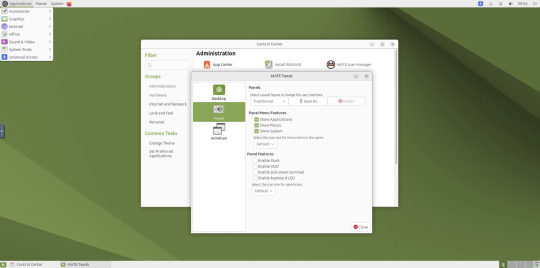
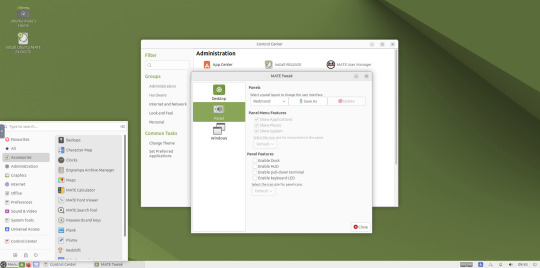
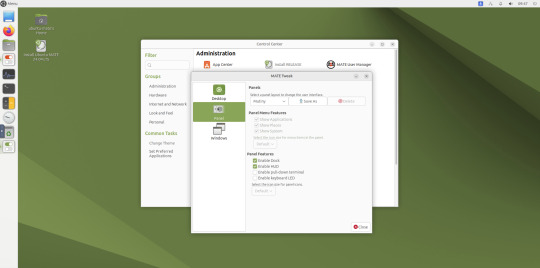
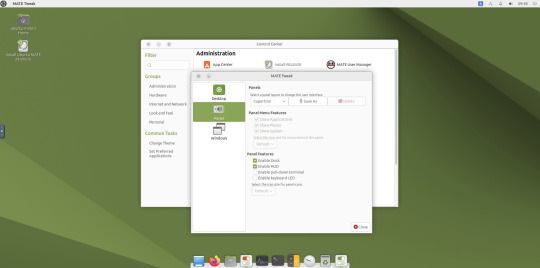
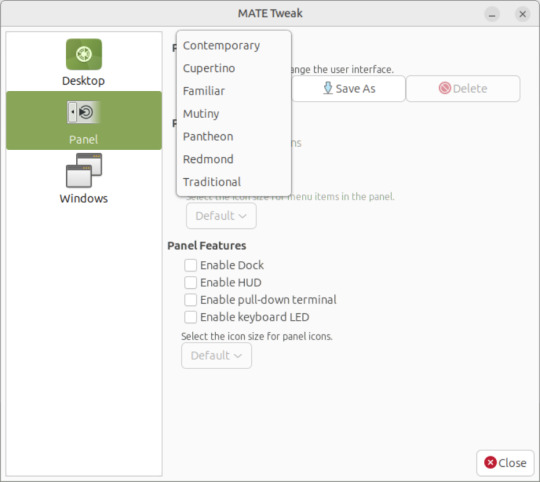
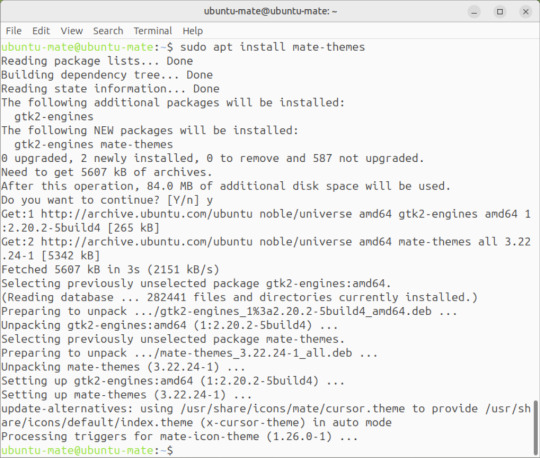

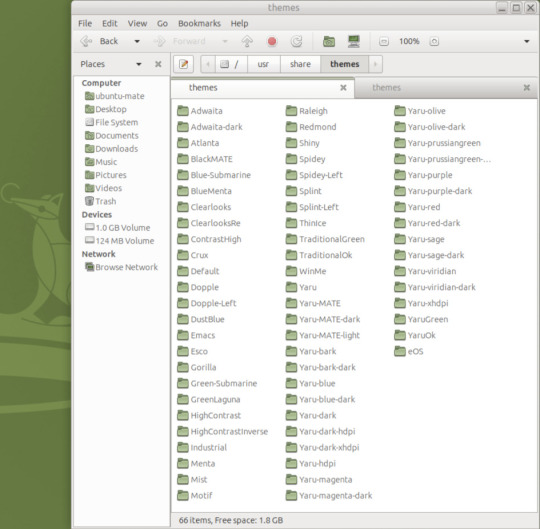
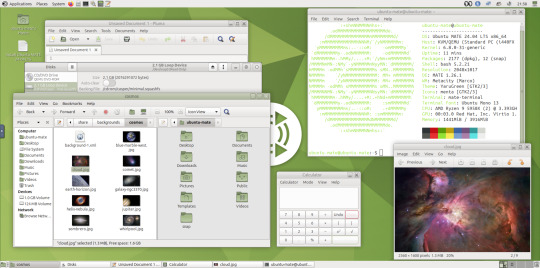
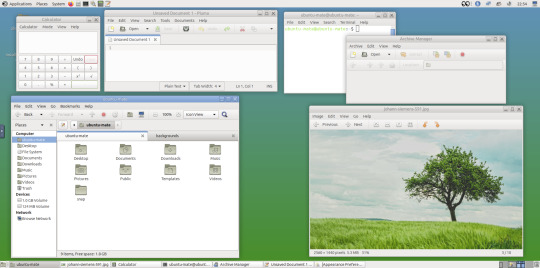
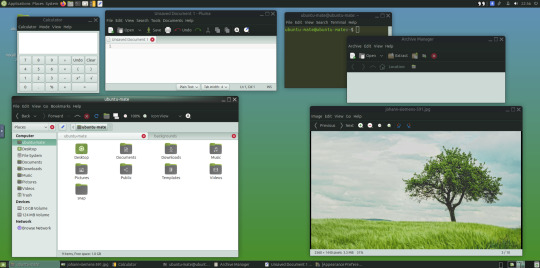
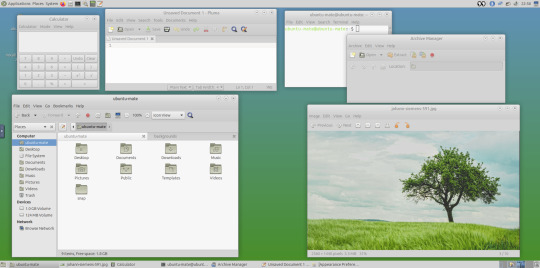
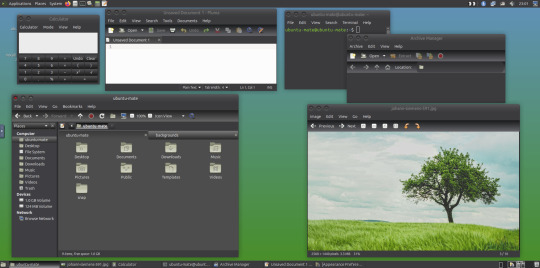

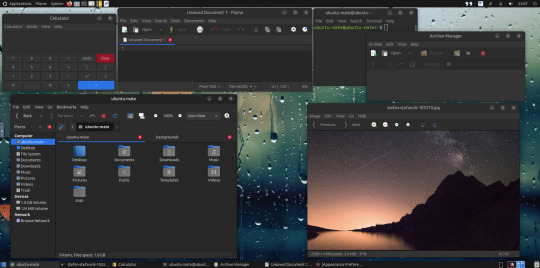

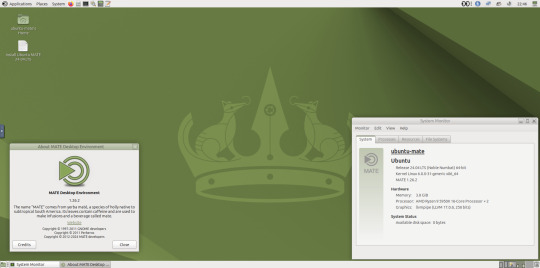

May 2025.
I tried installing a set of themes on Ubuntu MATE 24.04.1 LTS in Distrosea today.
https://distrosea.com/
These themes are provided as a theme package found in vanilla MATE desktops such as Debian and Fedora.
MATE is the modern day continuation of GNOME 2, a very popular, efficient and functional desktop environment from the early 2000s.
The theme pack I selected are compactable GTK3/4 (Graphical Toolkit) versions based on classic GNOME 2 era themes.
Ubuntu MATE website:
https://ubuntu-mate.org/
Debian Linux website:
https://www.debian.org/
Fedora Linux website:
https://fedoraproject.org/spins/mate
See MATE Desktop website here:
https://mate-desktop.org/blog/
About the Graphical Toolkit user interface:
https://en.wikipedia.org/wiki/GTK
I used the MATE Tweak tool to adjust the panels from the 'familiar' layout to the 'traditional' layout. Here are many of the layouts available.
MATE Tweak can change the panel layout between Traditional (GNOME 2), Unity, Redmond (Windows) contemporary (Mac OS) style.
Here are many of the layouts available.
Afterwards, I used the command line to install the themes with the command: sudo apt install mate-themes.
This command then prompted me to agree the system changes and then it installed the required theme files to the list.
I opened up the theme folder in the Caja file manager. This shows all the ones installed on the system.
Next I opened the appearance preferences and cycled through each theme. There are a total of 12 new themes it added alongside the existing Yaru Colour theme collection for Ubuntu.
This package couldn't be installed graphical so this is why I installed it through the terminal. It is also available to install through the Software Manager on Linux Mint.
The theme package can also be installed on the Cinnamon desktop and other linux distributions.
I like these themes as they provide a more 3D feel and is refreshing to see themes for a desktop environment that hasn't moved towards flat design. It themes all the desktop elements from the windows, panels, drop down menus, CSD apps and widgets.
My favourite one is called YaruOK (blue), as it provides resizable window controls, 3D controls and provides a familiar look to the desktop. The theme is also called TraditionalOK.
This theme is a fork of a GTK2 theme called Clear-looks, which was created by Red Hat developers.
YaruOK is a modern variant that uses GTK3 & 4. The theme is rendered in SVG instead of PNG format which improves HiDpi scaling and features themed client side decorations for header bar windows such as the Disks utility.
I also added a GNOME Eyes widget onto the panel!
These fun set of eyes follow your mouse cursor around the screen and can help you find the cursor amongst the clutter of windows. It is built to be very lightweight.
I also like the workspace switcher on the bottom left, which allows you to switch between as many desktop workspaces as you want.
The little square windows within each desktop can be clicked on and moved to another workspace.
Like with other desktop environments, you can also right click a window and move it onto another workspace. Each desktop can be named for a assigned task.
A System Monitor widget can also be added to the panels to display CPU, Memory, Swap and Network processes.
There are many other very interesting widget to play around with on the desktop and panels as well!
Here are the MATE themes in Ubuntu Linux 24.04.1, integrating with the Cinnamon desktop.
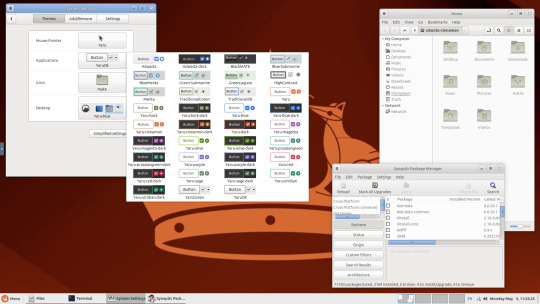
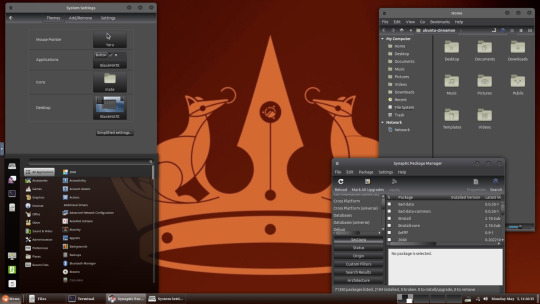
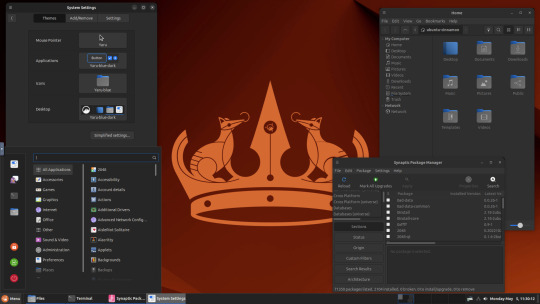
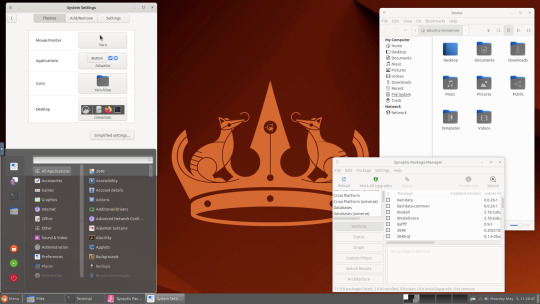
Below are some theming screenshots from Debian MATE 12 Linux.
I've customised the panel, selected the compact menu and changed notification sizes to make it more clearer. The window lists stack onto each other with the increased size.
The MATE panels have adjustable transparency and can be re-coloured and textured very easily through its own preferences box.
See screenshots below!
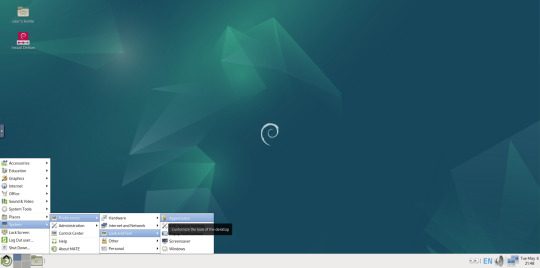
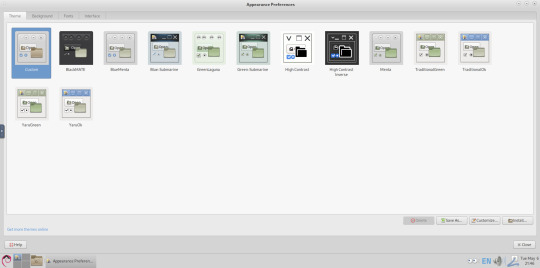
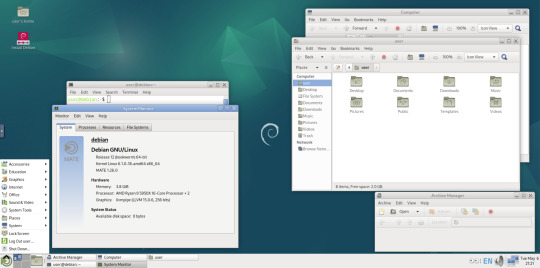
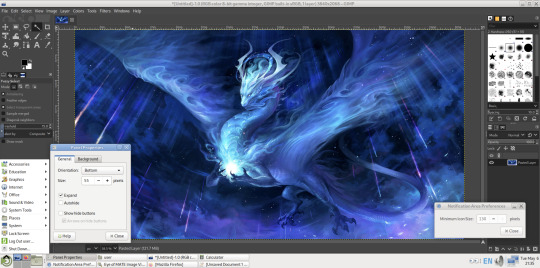
A very interesting look at the user interface elements found in GNOME 2, MATE and Cinnamon Linux desktop environments!
5 notes
·
View notes